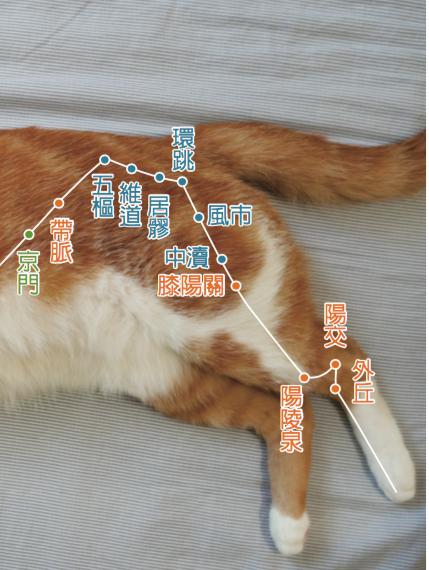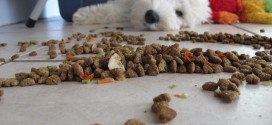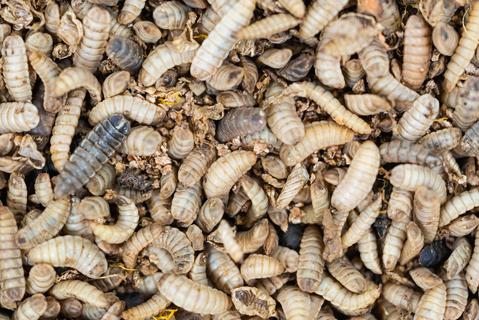文:美樂狗.千金爸
請獸醫不要再說老狗要降低蛋白質攝取了!
請獸醫不要再說高蛋白質會傷害腎臟!
其實很多年前這樣的研究資料已經出爐,我們也曾經在網誌上提出來過,奈何非常多的獸醫並沒有去鑽研這樣的資料,還停留在過去的假設認知當中,連知名獸醫還在呼籲老狗要限制蛋白質以免腎臟出事(他也不是第一次造成誤導了,在疫苗以及飼料的態度也都是如此昨是今非)。
根據NRC(美國國家科學研究委員會)揭示研究報告的幼犬生長期增重實驗,如果餵食幼犬(14週齡)高品質且易消化的蛋白質,15公斤體重每日只要約45公克的蛋白質,但是如果餵食穀類、動物性副產品的蛋白質,所需要的蛋白質會更多,15公斤體重需要約62.5公克的蛋白質,高出將近40%。可見餵食狗兒高消化性的優質高蛋白質,可以吃得比較少,所產生的含氮代謝物也會比較少。
一直以來,獸醫師認為老狗的飲食必須低蛋白質,但實際上的研究則不然。NRC 2006年出版的《犬貓營養需求報告書》中指出(註),老狗需要攝取更高的蛋白質(約比一般成犬高出50%),以維持最佳免疫反應、癒合傷口,並且確保老年時的健康。
註:1歲的狗兒每公斤體重每日需要2.5g蛋白質,12~13歲的狗兒每公斤體重每日需要3.75g蛋白質,Determination of Optimal Dietary Protein Requirements of Young and Old Dogs, R.W.Wannemacher,Jr. and John R. McCoy, Journal of Nutrition)
而以下來自犬貓營養學的專書(2010年出版的)
如果你的獸醫還在這樣講,請把以下內容印給他看,文末有各項研究報告的索引,可以讓獸醫好好仔細查查並詳加閱讀:
==================================================================
文章來源:CANINE AND FELINE NUTRITION, THIRD EDITION (ISBN: 978-0-323-06619-8)
PROTEIN EXCESS IN DOGS AND CATS P.103~P.104
與普遍看法相反,沒有任何研究、確實的證據認為蛋白質攝取會讓健康的貓狗造成腎臟功能不全(kidney dysfunction)
沒有任何證據證明年老的的寵物僅僅因為年紀大了而必須限制蛋白質的攝取。
—————————————————————————————————–
先前提到,有一些證據建議餵食動物較高於最低需求的蛋白質有助於維持含氮物平衡,如此全身蛋白質的流動可以藉此讓估算動物維持蛋白質需求時比較有利。
當攝入超過需求的蛋白質,有兩種可能使用額外蛋白質(蛋白質中的氨基酸)的途徑。
如果動物正處於消瘦的熱量不足狀態,過多的蛋白質會作為能量的來源
相反的,如果動物正處於適當的熱量供給或是熱量過多的狀態,過多的蛋白質將會儲存為脂肪,而且含氮物將會透過尿液排出。不像脂肪與碳水化合物一樣,氨基酸是不能儲存在身體中作為未來使用。
所有同伴動物都有能力代謝過多的蛋白質。這種代謝過程的結果是生成蛋白質尿素並隨著尿液排出。
過去有理論認為蛋白質攝取超過動物所需對於腎臟功能有不利的影響,特別是在年老的動物。
這是基於分解過多蛋白質以及隨後排出尿素的尿液以及其他含氮的廢物會導致腎功能不全的理論。(註94 )
在動物慢性腎臟疾病以控制飲食中的蛋白質作為降低尿毒症以及其相關臨床訊號,但沒有任何證據顯示蛋白質攝取引發或是幫助腎功能不全的發展。(註95)
隨著動物的年紀,腎臟的重量會減少而且腎功能會逐漸衰減。
這些是正常發生的,而且在人類及老鼠身上已經有廣泛的研究。(註96,97)
不過這些變化不應該過度擴大解釋來建議需要降低飲食中的蛋白質。(註98 )
一項在13年期間以米格魯群為樣本來評估腎臟功能臨床變化的研究,研究資料指出正常腎臟老化會在臨床或生化訊號發生前就已經出現超過75%的腎損傷。(註99 )
動物在小於75%的損害前的臨床信號經常是正常的。但是牠們或許比那些仍然蘊藏儲備腎功能能量的年輕動物更容易感受到腎臟傷害。
這些知識引導到未經實務測試就系統性降低老年動物飲食中的蛋白質來嘗試避免或是降低腎功能不全的發展。
不過,最近研究已經顯示老狗確實可以從稍高品質的蛋白質以及增加飲食中的蛋白質來幫助改善由於年紀造成的肌肉質量的損失。(註100 )
因此,沒有任何證據指出需要系統性降低健康老年寵物飲食中的蛋白質。
老年寵物不應該僅僅由於年紀逐漸老了而被限制飲食中的蛋白質。
==================================================================
原文:CANINE AND FELINE NUTRITION, THIRD EDITION (ISBN: 978-0-323-06619-8)
PROTEIN EXCESS IN DOGS AND CATS P.103~P.104
As discussed previously, there is some evidence suggesting that it may be beneficial to feed animals levels of protein that are higher than the minimum level necessary to maintain nitrogen equilibrium, and that whole-body protein turnover provides a better estimate of an animal’s maintenance protein needs.
When protein in excess of needs is consumed, there are two possible uses for the additional protein (amino acids). If the animal is in negative energy balance, the excess protein will be used as an energy source.
Conversely, if the animal is in zero or positive energy balance (i.e., consuming adequate or excess energy than it is expending, respectively), the excess protein will be deposited as fat and the nitrogen will be excreted in the urine.
Unlike fat and carbohydrate, excess amino acids are not stored by the body for future use.
All companion animals have the ability to metabolize excess protein. This process results in the production of protein urea and its excretion in the urine.
Historically, protein intake that was greater than an animal’s requirement was theorized to have detrimental effects on kidney function, especially in aging animals.
This was based on the theory that the catabolism of excess protein and subsequent urinary excretion of urea and other nitrogenous waste products was responsible for the progression of renal dysfunction.(註94 )
However, while the control of dietary protein is used to reduce uremia and its associated clinical signs in animals with chronic renal disease, there is no evidence showing that protein intake initiates or contributes to the progression of kidney dysfunction (see Section 5, pp. 412-414 for a complete discussion).(註95)
As animals age, they experience reduced renal weight and a gradual decline in kidney function.
These are normal occurrences and have been extensively studied in humans and rats.(註96,97)
However, these changes should not be extrapolated to suggest a need to reduce dietary protein.(註98 )
A study with dogs evaluated clinical changes in renal function in a colony of Beagles for a period of 13 years. The data from this study indicate that normal kidney aging can lead to a nephron loss of up to 75% before clinical or biochemical signs occur.(註99 )
Animals with less than a 75% loss are usually clinically normal,
but they may be more susceptible to renal insult than are younger animals still possessing renal reserve capacity.
This knowledge led to the untested practice of systematically reducing the protein content in the diets of elderly animals in an attempt to prevent or minimize progression of kidney dysfunction.
However, recent studies have shown that geriatric dogs actually benefit from slightly higher levels of high-quality protein and this increased dietary protein can help to ameliorate the age-associated loss of muscle mass.(註100 )
Therefore there is no evidence indicating a need to systematically reduce protein levels in the diets of healthy older pets. It is recommended that protein in the diets of geriatric pets should not be restricted simply because of advancing age (see Section 4, pp. 268-270 for a complete discussion).
—————————————————————————————————————————————-
Contrary to popular belief, there is no research-based, conclusive evidence that protein ingestion contributes to the development of kidney dysfunction in healthy dogs and cats.
Moreover, there is no evidence that the protein intake of geriatric pets should be restricted just because of old age.
—————————————————————————————————————————————–
(註94.)Murphy DH: Too much of a good thing: protein and a dog’s diet, Int J Study Anim Prob 4:101–107, 1983.
(註95.) Finco DR, Brown SA, Crowell WA, and others: Effects of aging and dietary protein intake on uninephrectomized geriatric dogs, Am J Vet Res 55:1282–1290, 1994.
(註96.) Lowenstein LM: e rat as a model for aging in the kidney. In Gibson DC, Adelman RC, Finch C, editors: Development of the rodent as a model system of aging, Washington, DC, 1978, US Department of Health, Education, and Welfare.
(註97.) Goldman R: Aging of the excretory system: kidney and bladder. In Finch EE, Hayflick L, editors: Handbook of the biology of aging, New York, 1977, Van Nostrand Reinhold.
(註98.) Milward DJ, Fereday A, Gibson N, Pacy PJ: Aging, protein requirements, and protein turnover, Am J Clin Nutr 66:774–786, 1997.
(註99. Cowgill LD, Spangler WL: Renal insu ciency in geriatric dogs, Vet Clin North Am Small Anim Pract 11:727–749, 1981.
(註100.) Davenport G, Gaasch S, Hayek MG, Cummins KA: Effect of dietary protein on body composition and metabolic responses of geriatric and young-adult dogs, J Vet Intern Med 15:306, 2001.
版權聲明:阿公阿嬤碎碎唸http://www.murmurdnk.tw
(照片來源:![]()
![]() eschipul)
eschipul)
 阿公阿嬤碎碎唸(Murmur Denver & Karen) 一對擁有十二隻狗女兒及狗孫子女,享受人狗一家的老夫妻平凡生活記趣。
阿公阿嬤碎碎唸(Murmur Denver & Karen) 一對擁有十二隻狗女兒及狗孫子女,享受人狗一家的老夫妻平凡生活記趣。





